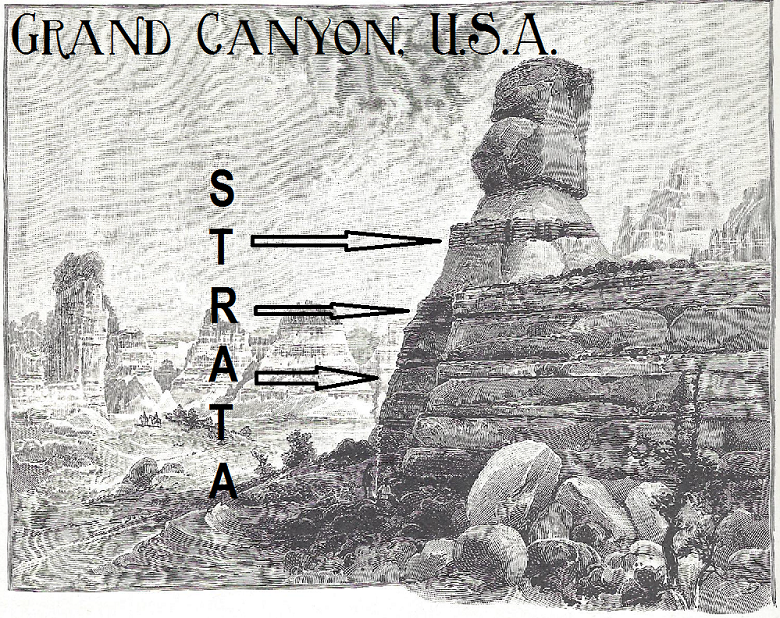Rock Strata of the Grand Canyon |
|---|
| www.studenthandouts.com > Science > Science Image Gallery |
 |
|---|
This picture illustrates the strata--layers of rock--at Grand Canyon National Park in the United States. Click here to enlarge. The rock strata of the Grand Canyon are a result of millions of years of geological processes, including sedimentation, tectonic activity, erosion, and the uplifting of the Colorado Plateau. The Grand Canyon provides a unique and well-preserved record of Earth's geological history.
Sedimentary Deposition: The story begins hundreds of millions of years ago when the region that is now the Grand Canyon was covered by seas, deserts, and other environments. Sedimentary rocks, such as sandstone, shale, and limestone, gradually formed as layers of sediment accumulated over time. Tectonic Activity: Around 70 million years ago, tectonic forces started to uplift the Colorado Plateau, which exposed the sedimentary layers. The uplifting was not uniform, creating a slope from north to south. Colorado River Erosion: The Colorado River, over millions of years, carved its way through the rising plateau, exposing the various rock layers. Erosion by the river played a significant role in shaping the Grand Canyon. Stratification: The exposed rock layers are often referred to as strata. Each layer represents a distinct geological period with its unique set of environmental conditions. Some layers contain fossils that provide insights into ancient life forms and past environments. Rock Types: The Grand Canyon features a variety of rock types, including the Kaibab Limestone at the top, which dates back to the Paleozoic Era, and the Vishnu Schist at the bottom, a metamorphic rock that formed around 1.7 billion years ago. In between, you can find layers from the Mesozoic and Cenozoic Eras. Fossils: Some of the layers contain fossils of marine life, indicating that the region was once covered by seas. Other layers, like the Coconino Sandstone, feature dune patterns that suggest ancient deserts. The variety of fossils and sedimentary features provide evidence of past environmental changes. Grand Unconformity: One of the most intriguing features is the "Great Unconformity." It's a significant gap in the rock record where layers from hundreds of millions of years are missing. The exact reason for this gap is still a topic of research and debate among geologists. The Grand Canyon is often referred to as a "window to the past" because it provides a visual timeline of Earth's geological history. Each layer represents a different chapter in the Earth's story, and studying these rock strata helps geologists understand the planet's dynamic past, climate changes, and the evolution of life. It is a remarkable natural laboratory for geological research and a testament to the Earth's incredible age and complexity. |
|---|
 |
|---|
| www.studenthandouts.com > Science > Science Image Gallery |











